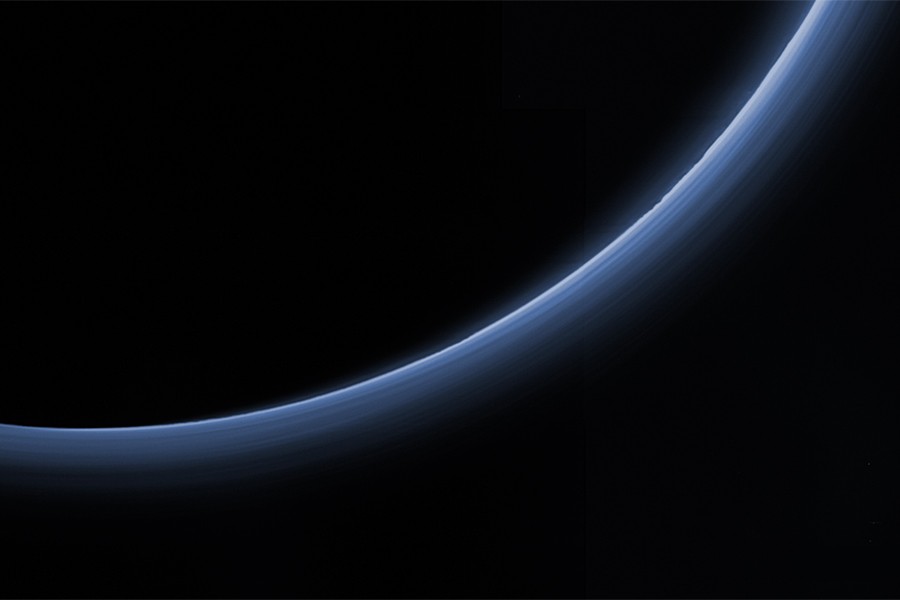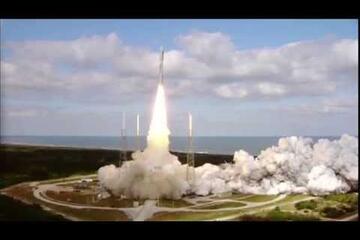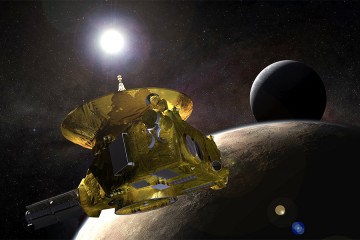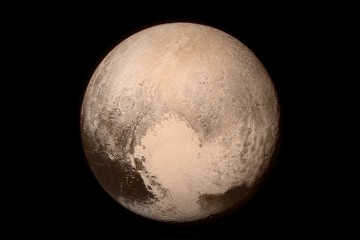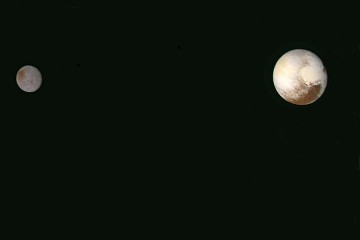Ten years ago Tuesday, one of the great robotic explorers of our age, NASA's New Horizons spacecraft, rocketed into the sky above the Florida coastline.
The tiny probe—weighing barely 1,000 pounds—sped from Earth faster than any spacecraft before it, embarking on a 9.5-year voyage across more than 3 billion miles that culminated last summer in the historic first reconnaissance of Pluto and its family of small moons.
"With that flyby, New Horizons completed a long-held goal of the scientific community and a five-decade-long quest by NASA to explore all the planets known at the start of the space age," said Alan Stern of the Southwest Research Institute in Boulder, Colorado, principal investigator of the New Horizons mission. "And that all got its start 10 years ago with our launch."
Today, New Horizons, now far beyond Pluto, continues to send back data from that July 14 encounter, and the detailed views of these strange new worlds on the planetary frontier have amazed scientists and the public alike. The excitement of scientific discovery may have pushed the launch further back into collective memory, but the event that started New Horizons toward Pluto and the once-unexplored Kuiper Belt still has special meaning to the team that designed, built and then guided the spacecraft through the solar system.
We have liftoff
New Horizons lifted off at precisely 2 p.m. aboard a Lockheed Martin Atlas V launch vehicle specially equipped with a Boeing third stage rocket, making it the most powerful rocket NASA's science program has used in this century. It hurtled from Earth at more than 35,000 miles per hour—the fastest departure of any spacecraft before or since.
Just 13 months later, New Horizons flew past Jupiter, getting a gravity assist that added another 9,000 miles per hour to its pace toward Pluto, and giving the team a chance to train the spacecraft's instruments on the giant planet and its largest moons. The Jupiter flyby was a mission in itself, helping the team gain flyby experience and producing discoveries that included the first close-up looks at lightning near Jupiter's poles and the first motion-picture sequence of an erupting volcano on the moon Io.
The spacecraft entered hibernation after the Jupiter flyby was complete, but mission activity barely slowed down from there. As New Horizons continued across the solar system at record speed, the science, spacecraft and operations teams designed and practiced the intricate activities of the upcoming Pluto encounter. The spacecraft spent more than two-thirds of its cruise between Jupiter and Pluto in hibernation, which saved wear-and-tear on its systems and required fewer tracking resources at home.
"Mission Operations personnel always got the question, 'How are you going to keep busy and motivated for the nine and half years it's going to take to get to Pluto?'" said Mission Operations Manager Alice Bowman of the Johns Hopkins University Applied Physics Laboratory in Laurel, Maryland. "I don't know a single New Horizons operations person who was ever bored or unmotivated during the long cruise to the Pluto system. We have a small team, and there always seemed to be a technical challenge, a new moon [to include in the observation plans], or something else that kept us engaged. The time went by faster than expected."
Moving at Life Speed
Busy as they were, just as much was happening for the team outside of the major responsibility of moving New Horizons through space.
"The 10-year launch anniversary to me is a time to reflect on how far we have come together as people," said Mission Operations Flight Control Lead Becca Sepan of APL. "I don't think it's a stretch to say that every single member of our team, across the science, engineering, operations, and outreach disciplines, experienced at least one major life event in the time New Horizons has been in flight."
Sepan points out that she had been engaged for less than a month when New Horizons launched; she's now a married mother of two. Fellow flight controller Melissa Jones said her family "didn't exist" in January 2006; when the spacecraft flew by Pluto last July 14 she watched the festivities at APL with her husband and three children, ages 8, 6, and 4.
Others on the team have lost family members, gotten engaged, married or divorced, had children and grandchildren, bought their first houses, earned graduate degrees.
"While we were busy developing command sequences, planning science observations, testing on the simulator, we talked about these major life events and our daily happenings," Sepan said. "After 10 years of doing that together, it's hard not to feel like we have an extended family in the New Horizons team."
Making History
The Pluto encounter began in January 2015, with distant images of Pluto and Charon the team used mostly for navigation. As New Horizons sped closer and the Pluto system grew from a pair of tiny white dots into a dynamic, colorful system of worlds, the milestone that seemed so far away on that mild January day was becoming more and more real.
And as New Horizons began delivering the data and close-ups of Pluto and Charon that have dazzled the world—and opened the door to a new realm of the solar system that is unlike anything seen before—the sense of anticipation that began at launch has given way to a sense of pride and accomplishment.
"Looking at the images of Pluto, it is truly an amazing feeling to know that you helped make that happen," said Mission Operations team member Sarah Hamilton of APL. "When I reflect on the last 10 years it is the team that I think about. The success of this mission truly is a team effort and it's a privilege to be a part of it."
Posted in Science+Technology
Tagged applied physics laboratory, nasa, new horizons




